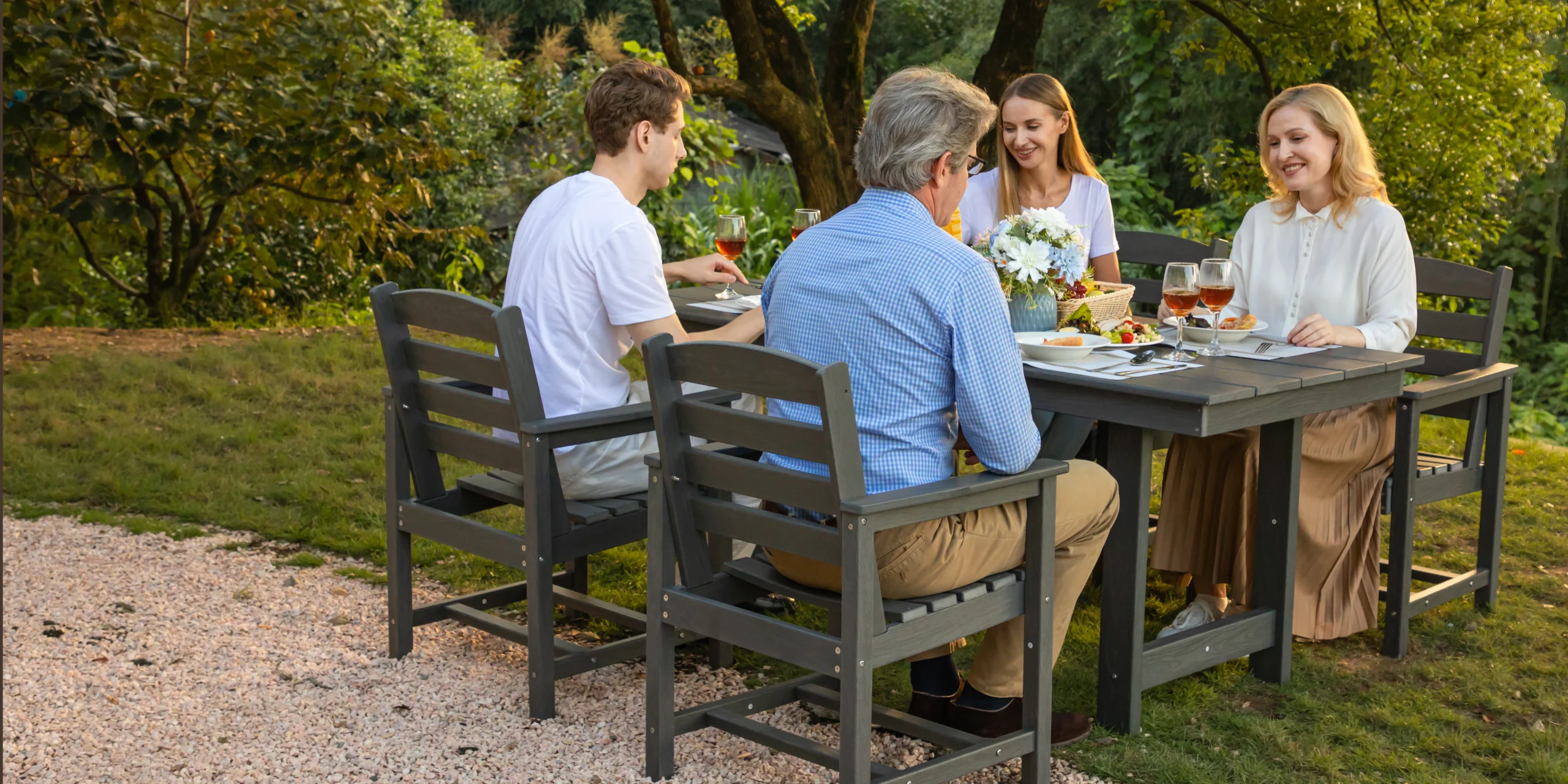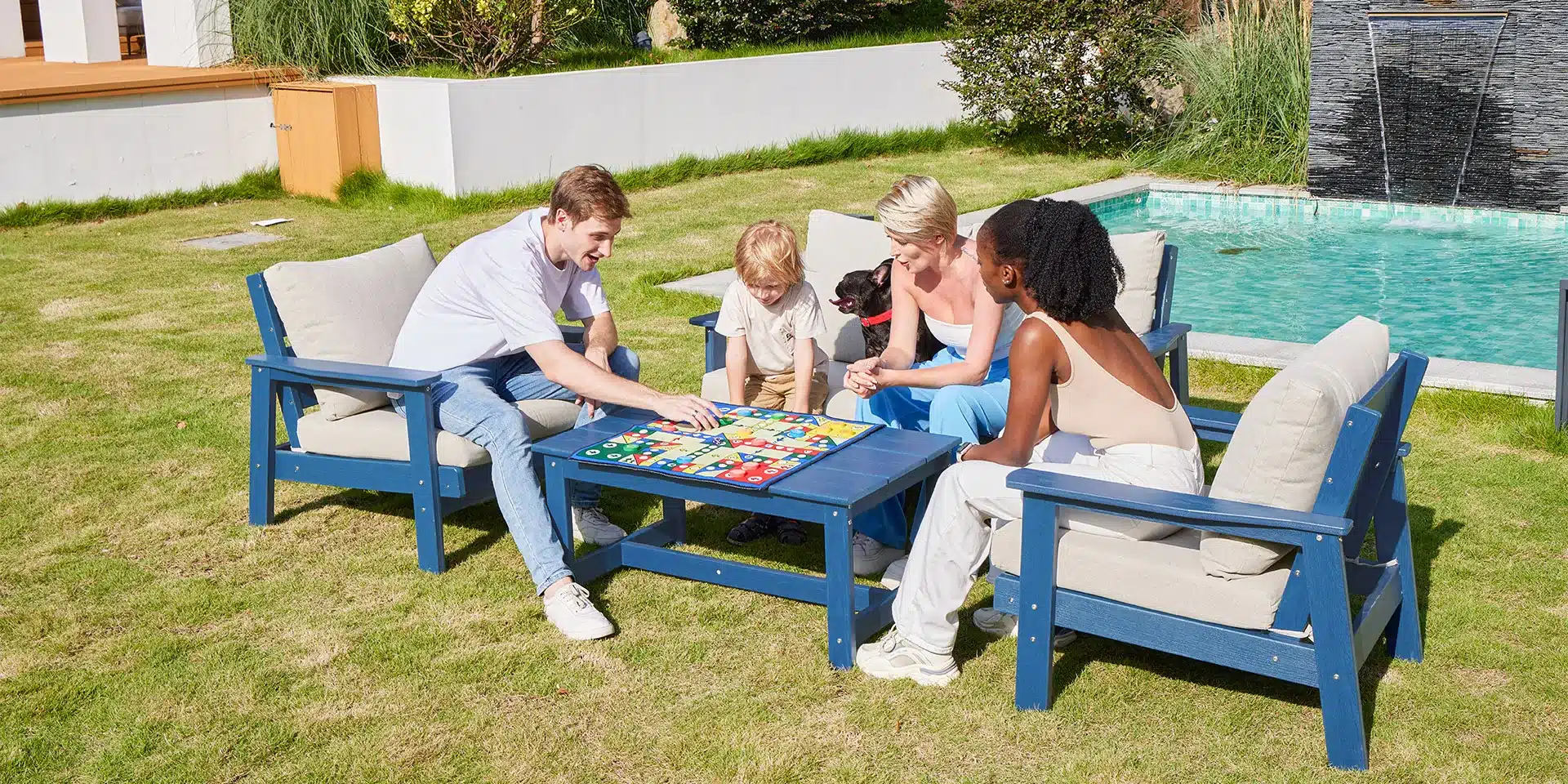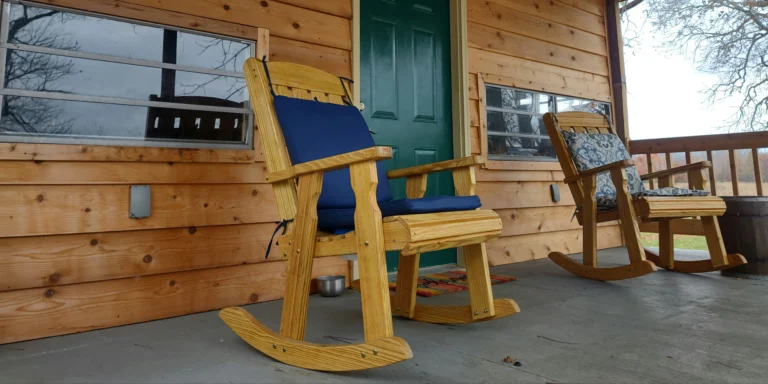Furniture covers are an important barrier for outdoor furniture against inclement weather. However, it’s particularly susceptible to dust accumulation and mold growth due to prolonged exposure, which can affect its aesthetics and durability. Don’t worry though, with the right cleaning and maintenance methods, your outdoor furniture covers can be refreshed and continue to guard your outdoor space.
Common Materials for Outdoor Furniture Covers
Outdoor furniture covers are made from a variety of materials, each with different characteristics and corresponding cleaning methods. Some can be hand or machine washed, while others require extra careful handling and are only suitable for hand washing. Knowing the type of outdoor furniture cover you have in your home is the first step towards cleaning it properly.
Polyester
Polyester is one of the most common materials used in outdoor furniture covers.It’s a synthetic fiber that is wrinkle-resistant, durable, and fast-drying, and is able to cope with changes in outdoor weather for a long time and keep the color from fading. Furniture covers made of this material can be machine or hand washed, and it is recommended to use neutral detergent to clean them and avoid using bleach to avoid damaging the waterproof coating.
Nylon
The nylon material is lightweight and strong, with good tear resistance and water resistance. This type of furniture cover can also be hand and machine washed. It’s recommended to use warm water (no more than 30°C) and a neutral detergent for cleaning, and to prevent damage to the fibers, it’s best not to use strong alkaline detergents.
Vinyl
Vinyl furniture covers have a smooth surface that does not easily attract dust and water droplets, making them highly resistant to water and stains. Machine washing is not recommended for this type of furniture cover, but hand washing with mild soap and water is recommended. Stubborn stains can be removed with a special vinyl cleaner. Avoid using harsh solvents such as alcohol during cleaning as this may corrode the surface.
Polypropylene
Polypropylene has excellent water and stain resistance and is affordable and cost-effective. However, it’s slightly less durable than other materials. Although polypropylene furniture covers can be machine washed, prolonged machine washing will accelerate wear and tear and affect usage. Hand washing is the more recommended method of cleaning when conditions allow.
Items Needed for Cleaning

Before cleaning your furniture covers, be sure to read the product instructions provided by the manufacturer to see if they require the use of specialized cleaners or cleaning tools. Below is a basic list of cleaning items that are suitable for most hand and machine washable furniture covers.
Suitable for Hand Washing:
1.Warm Water(no more than 30°C)
2.Mild Soap
3.Bucket
4.Soft Bristle Brush or Sponge
5.Garden Hose
6.Clothes Rack or Clothesline
Suitable for Machine Washing:
1.Warm Water(no more than 30°C)
2.Neutral Detergent
3.Laundry Bag
Cleaning Methods
After preparing all the cleaning items, we can start cleaning the furniture covers.
Hand Washing
- Start by placing the removed furniture cover on a flat surface and gently patting it to remove any floating dust and loose dirt from the surface.
- Add warm water and a mild soap to a bucket and stir well.
- Completely soak the furniture cover in mild soapy water and rub gently to allow the cleaning solution to penetrate and loosen the stains.
- Using a soft-bristled brush or sponge, gently brush furniture cover, especially the heavily stained areas.
- Use a garden hose to rinse the furniture cover thoroughly. To make sure the cleaner is completely rinsed out, gently press the furniture cover with your hand and watch for any foam residue. If no foam comes out, it means it has been rinsed clean.
- After washing, hang the furniture cover on a clothes rack or clothesline and place it in a well-ventilated area away from direct sunlight.
Machine Washing

- Before washing, gently pat the furniture cover to remove floating dust.
- To reduce the wear of the furniture cover by the rotation of the washing machine, fold the furniture cover neatly and put it in the laundry bag, zip up or draw the cuffs.
- To avoid mutual staining, wash furniture covers separately and not with other fabrics.
- Set the washing machine to wash in warm water (no more than 30°C), select the gentle mode or fabric protection mode, and avoid high-intensity agitation to damage the fabric.
- Add an appropriate amount of neutral detergent, and avoid using detergents containing bleaching ingredients or strong alkalinity to prevent damage to the waterproof coating or aging of the fabric.
- After washing, hang the furniture cover on a clothes rack or clothesline and place it in a well-ventilated place away from direct sunlight. Don’t use a high-temperature dryer to prevent shrinkage or damage.
Stubborn Stain Removal
If there are stubborn stains on the furniture covers, such as bird droppings and mildew, which cannot be removed by ordinary cleaning, we need to adopt a more targeted cleaning method.
Mold
First, use a soft bristle brush to gently brush off the surface mold. Next, soak the moldy area in a diluted white vinegar solution (1:1 dilution ratio), or use a spray bottle to spray the solution on it. Then use a soft brush to brush the area. Finally, rinse thoroughly with water and place the cover in a cool, well-ventilated area to dry.
Bird Droppings
When handling bird droppings, first distinguish between wet and dry conditions. For dry bird droppings, scrape the surface solids directly with a cardboard or plastic spatula; for wet bird droppings, use a paper towel to soak up the excess liquid before scraping the remaining part. Next, soak the stain with a baking soda solution (baking soda mixed with water in a 1:3 ratio) and let it sit for 5 minutes to soften the residue. Finally, brush with a soft-bristled brush and wipe off with water. If odors or traces remain, please consider whether alcohol disinfection and cleaning is necessary based on the material.
Tree Sap
For tree sap, apply ice to the area to harden and brittle it, then use cardboard or a plastic spatula to scrape off the top layer. For any remaining tree sap, use alcohol to soften and remove it. Before treating, always check the product instructions to make sure alcohol is OK for furniture covers, or test a small area in an inconspicuous area first to make sure the alcohol will not damage the fabric.
Maintenance and Care
In addition to cleaning, it’s also vital to perform additional maintenance and care on your furniture coverings regularly.
- Regular dust removal: Use a vacuum cleaner or soft brush to remove dust and debris from the surface of furniture covers regularly to avoid long-term accumulation of dirt and bacteria.
- Timely treatment of stains: If you encounter small stains such as bird droppings and oil stains, you should clean them as soon as possible to prevent prolonged penetration and curing.
- Avoid exposure to the sun: Don’t dry the cleaned furniture covers in the sun. Excessive exposure may cause the fabric to fade or age. You can choose a cool and ventilated place to dry.
- Moisture-proof: When storing furniture covers, they should be placed in a dry and ventilated place to avoid moisture causing mold growth.
- Regularly check for damage: Regularly check whether the furniture covers are damaged or torn, and repair or replace them in time. This can also effectively protect the furniture and prevent damage to the furniture from the external environment.
Hopefully, with the tips for cleaning outdoor furniture covers we shared above, your furniture covers can be kept in good condition, thus ensuring the long-term use of the furniture and the neatness and beauty of your outdoor space.





